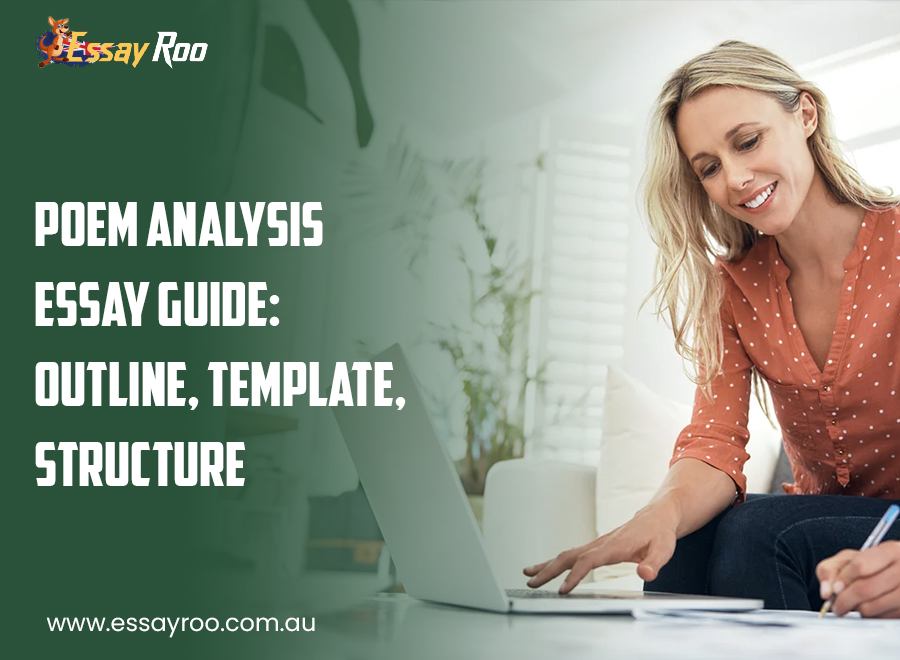Poetry or art makes it possible for the reader to unveil the various meanings and themes underlying the work. Highlight the purpose of the essay guide by introducing a formal strategy of attempting meaningful analysis of the poem. Those who practice it learn to do it well.
1. Recognizing Poetry:
- Describe what poetry is and how it manifests itself in us. For instance, through the use of symbols, images, figurative language, as well as rhythm.
- Give examples about context. Such as the poet’s life biography, history, and cultural factors, and their influence when interpreting the poems.
2. Choose a Poem:
- Give students an idea of how to pick a poem for analysis with tips on considering such factors as personal interest, thematic relevance, and simplicity.
- Ask readers to investigate different poets, styles, and genres of poetry. And see the wide range of art that poetry can be and how interesting it gets along the way.
3. Outline and Structure:
Give a suggested outline for organizing a poem analysis essay, including:
- Introduction: Begin with a brief introduction about the poem, its title, poet, and background to have common ground. Start your essay with a thesis statement. That explains what your thesis or the perspective/ approach you would like to present.
- Body Paragraphs: Give a detailed exposition of the theme (such as imagery, symbolism, tone, and structure) by utilizing paragraphs independently. Cite each of your supporting examples with direct evidence from the text. And also include a brief comment to better explain how that detail supports your claim.
- Conclusion: Restate the thesis and then provide a summary of major findings or conclusions. Finally, deliver your point of view on the poem that is about its motive and/or relevance.
4. Close Reading and Annotation
- Offer strategies for conducting a close reading of the poem, such as:
- Highlighting the repeated motifs, symbols, and the use of metaphors, that you might find in this story.
- The poem’s form structure, and rhythm are critical to the poem’s analysis.
- Invite the audience to draw annotations to the poem, only to supply answers, questions, and interpretation to aid analysis.
Also, Essay Roo can help you out in such situations if it feels tough to gather relevant info regarding the topic.
5. Analyzing Poetic Devices:
Explore common poetic devices and their effects on meaning and interpretation, including:
- Imagery: Imagery that builds up through descriptive words. And appeals to the senses is applied, which gives birth to mental images.
- Symbolism: Symbol usage is characteristic of these works to represent ideas, themes, or concepts that are not observable or tangible.
- Metaphor and Simile: Analogies that are meant to be vivid enough to help us picture easily the bigger meanings. Or the ideas presented in the art.
- Tone and Mood: The impressionist mood and the writer’s emotion via the poem.
6. Interpreting Themes and Meanings:
- Guide readers in identifying and analyzing thematic elements within the poem, such as:
- Natural Space and Ecosystem
- Identity and Self-Discovery
- Mortality and Transience
- Encourage readers to pay attention not only to the aesthetic elements of the poem like the use of language, imagery, and structures. But also how adequately the poet can explore the themes at hand.
7. Incorporating Context:
- Discover the historical events, the political trends. And the poet’s personal experiences that may have inspired the poem to have the themes and the visual representations.
- Give the poets’ works some exemplifications, showing how partially they can be understood without realizing their historical background.
8. Composing the Analysis:
- Provide tips for writing a cohesive and insightful poem analysis essay, including:• Provide tips for writing a cohesive and insightful poem analysis essay, including:
- Writing a manifest of your thoughts and ideas concerning the thesis statement which will be the foundation of the paper and contain the major argument or subject.
- While the main argument is developed with textual examples to back the claims and the interpretations, it must be supported by detailed and thoughtful analysis and commentary.
- Employing a cohesive and logical order, together with well-knit transitions between paragraphs.
- By providing individual opinions and unique understandings while still keeping the original meaning of the poem
- To round up the narration by summing up the poem’s impact on an individual through the age in a genuine aspect.
Some students still find it difficult to compose essays but not to worry Essay Writing Service Australia are here to help such students and provide them with great convenience.
Conclusion:
- Explain the basic elements of responsible poem analysis, highlighting the power of close reading, analyzing, and contextual knowing.
- Promote the readers’ application of principles and techniques specified in the guide, which will help them to think more deeply and gain more knowledge about poetry.
To achieve this end, the guide can be of considerable help to those who want to approach complex issues from a new angle and delve deeper not only to figure out the general meaning but also those mainly hidden narrative levels and emotions contained in each verse.

